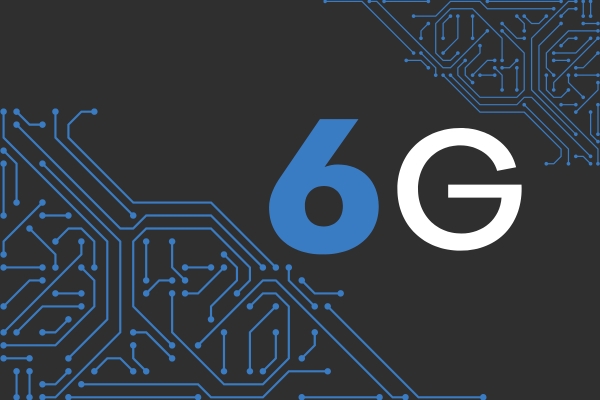The world of technology is constantly evolving, and with each generation of mobile communication, we experience a leap forward in connectivity. We’re currently basking in the (relatively) new world of 5G, with its blazing-fast speeds and ever-expanding reach. But the innovative minds behind the scenes are already looking ahead, conceptualizing the next big revolution: 6G.
What is 6G?
6G, or sixth-generation cellular network technology, is the successor to our current 5G standard. It’s still in its early stages of development, with a target launch date sometime in the early 2030s. Unlike its predecessors primarily focused on enhanced mobile communication, 6G aims to be much more. It envisions a world where the physical, digital, and even biological realms seamlessly merge, creating a brilliant and interconnected environment.
Advantages of 6G over 5G: A Quantum Leap in Connectivity
Here’s where things get exciting. Compared to 5G, 6G promises some significant advancements:
- Speeds Measured in Terabits: Imagine downloading an entire movie in a fraction of a second. That’s the kind of mind-blowing speed 6G is expected to deliver, with potential data rates exceeding 100 Gigabits per second (Gbps). This is a significant jump from the multi-Gbps speeds of 5G.
- Ultra-Low Latency: Latency refers to the delay in data transmission. 6G aims for sub-millisecond latency, meaning near-instantaneous responses. This is crucial for real-time applications like remote surgery, autonomous vehicles, and immersive virtual reality experiences.
- Unprecedented Network Capacity: With the ever-growing number of connected devices (think Internet of Things or IoT), networks need to be able to handle a massive amount of data traffic simultaneously. 6G will boast a significantly higher network capacity, seamlessly accommodating this ever-increasing demand.
- Network Slicing: Imagine a network that can be customized for specific needs. 6G will offer “network slicing,” allowing for the creation of virtual networks tailored to different applications, ensuring optimal performance for each.
- AI-Powered Intelligence: 6G will be deeply integrated with Artificial Intelligence (AI), enabling the network to learn, adapt, and optimize itself in real-time. This will lead to more efficient resource allocation and a more dynamic user experience.
- Sensing and Imaging Capabilities: 6G networks might even possess built-in sensing functionalities. This could involve using radio waves to create high-resolution images and reconstruct environments, opening doors for innovative applications.
When Can We Expect 6G? Patience is a Virtue
While the vision for 6G is captivating, commercial deployment is still a ways off. The technology is currently in the research and development phase, with various industry leaders and organizations like The International Telecommunication Union (ITU) collaborating to define the technical standards. Experts estimate a potential launch date sometime in the early 2030s.
Do We Even Need 6G? The Driving Forces Behind Innovation
The need for 6G stems from several factors. As mentioned earlier, the ever-growing number of connected devices requires a network infrastructure that can handle the immense data traffic. Additionally, the rise of technologies like augmented reality (AR), virtual reality (VR), and the Internet of Things (IoT) demands a network with exceptional speed, low latency, and high capacity. 6G aims to be the foundation for these advancements, enabling seamless user experiences in a truly connected world.
Who’s Working on 6G? A Global Collaborative Effort
Developing a revolutionary technology like 6G requires a global effort. Major telecommunications companies like Ericsson, Nokia, and Huawei are at the forefront of research, proposing innovative solutions and conducting extensive trials. Additionally, standardization bodies like 3GPP (3rd Generation Partnership Project) and industry alliances are crucial in establishing the technical specifications and ensuring interoperability between different 6G networks.
The Future Scope of 6G Networks: A Glimpse into a Connected Tomorrow
The potential applications of 6G are vast and transformative. Here are a few exciting possibilities:
- Revolutionizing Healthcare: Imagine remote surgeries performed with near-instantaneous precision thanks to ultra-low latency. 6G could also facilitate real-time patient monitoring and personalized medicine approaches.
- Enhanced AR/VR Experiences: Imagine hyper-realistic AR/VR experiences with seamless interaction and minimal lag. 6G’s capabilities could unlock entirely new avenues for entertainment, education, and training.
- Smarter Cities and Infrastructure: 6G could be the backbone of smart cities, enabling intelligent traffic management, real-time environmental monitoring, and connected infrastructures that optimize resource utilization.
- The Rise of the Tactile Internet: Imagine experiencing the texture of a virtual object or feeling the wind in your hair during a VR simulation. 6G’s potential for high-fidelity sensory data transmission could usher in the era of the “Tactile Internet,” blurring the lines between the physical and virtual worlds.
- Industrial Automation on Steroids: Imagine factories operating with complete autonomy, machines communicating seamlessly, and real-time adjustments based on sensor data. 6G’s ultra-reliable and low-latency connections will be a game-changer for industrial automation, leading to increased efficiency and productivity.
- Enhanced Public Safety: 6G could revolutionize public safety by enabling real-time emergency response coordination, remote disaster management, and even the deployment of autonomous drones for search and rescue operations.
A Peek Beyond: What About 7G?
While 6G is still under development, discussions about 7G, the next hypothetical generation, have already begun. It’s too early to predict specific features of 7G, but experts anticipate it to build upon the foundation laid by 6G. We can expect even faster speeds, potentially reaching the Terahertz (THz) range, and further advancements in areas like AI integration, network security, and energy efficiency.
However, it’s important to remember that the path to 7G will likely be shaped by the advancements made in 6G. As we delve deeper into the research and development of 6G, the vision for 7G will become clearer.
Conclusion: Embracing a Connected Future
The arrival of 6G promises to usher in a new era of connectivity, characterized by unprecedented speed, near-instantaneous responses, and a seamlessly integrated digital and physical world. While the technology is still in its nascent stages, the potential applications are vast and hold the power to transform various aspects of our lives. As we move towards a more connected future, 6G presents a thrilling opportunity to explore the boundless possibilities of technology and redefine the way we interact with the world around us.
Additional Notes:
- It’s important to acknowledge that the development of 6G might face challenges like infrastructure upgrades, spectrum availability, and ensuring equitable access for all.
- The ethical implications of such a connected world also need careful consideration.
- As with any new technology, there will likely be a period of adaptation and addressing unforeseen issues.
Even though there might be challenges along the way, the good things that 6G could bring are clear. It shows how clever we humans are and how much we always want to be more connected and have smarter technology in the future.














Leave a Reply